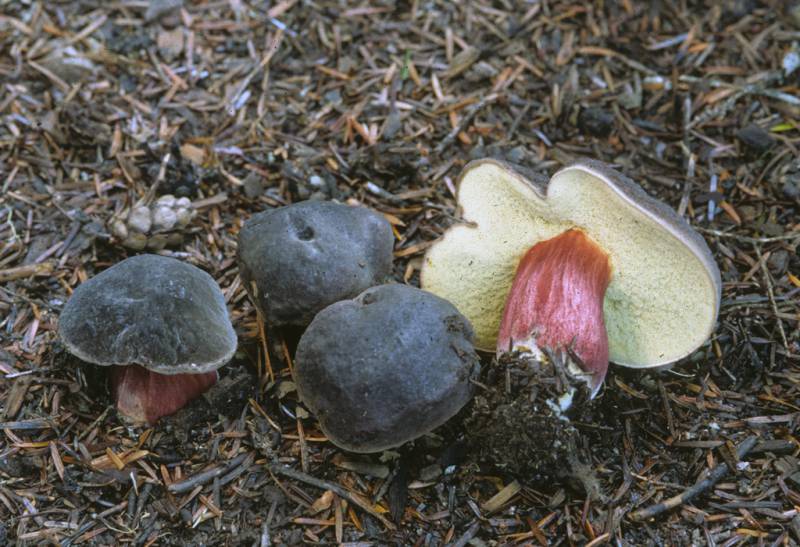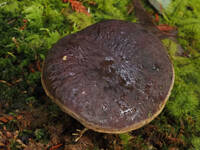Distribution: Common in coastal and low elevation conifer forests.
Habitat: Occurs in urban areas, parks, along trails, and in other areas where conifers occur.
Conservation Status: Not of concern
Edibility: It is edible and a favorite of some people but, in general, is not widely collected.
It is edible and a favorite of some people but, in general, is not widely collected.
Boletus zelleri is very similar to B. chrysenteron and, although most collections of the two are easily separated, they can integrade in color. Typically B. zelleri has a black to blackish brown or dark brown cap, often with reddish tones near the edge. The tubes are olive yellow and become blue when bruised. The stipe usually is some shade of red, sometimes with considerable yellow, especially at the apex, and the surface is granular to punctate. It is usually most prevalent in fall but it can be found other times as well.
Sources: Trudell, Steve and Joe Ammirati. Mushrooms of the Pacific Northwest. Portland, Timber Press, Inc. 2009.
PNW Herbaria: Specimen records of Boletus zelleri in the Consortium of Pacific Northwest Herbaria database
CalPhotos: Boletus zelleri photos


















